Week 31
Masking Fluid Resist
BY DIANA TROUT | from Journal Spilling
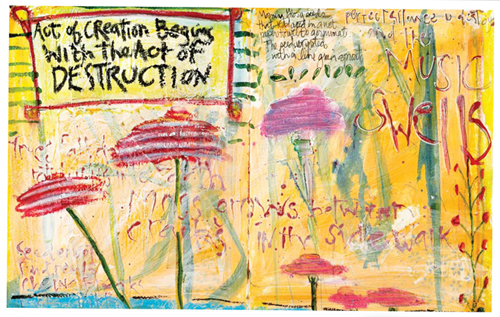
With this week's technique, you'll see that masking fluid is great stuff. The fluid can be painted directly onto paper or stamped on to create designs, patterns and words that paint will easily resist. But remember, a small bottle goes a long way, and it can be a trial to clean up, so be meticulous about cleaning brushes and stamps with warm water and soap along the way. In the scheme of play, this technique is best saved for last, so that you can leave it to dry overnight.
Materials
 paintbrush
paintbrush
 masking fluid
masking fluid
 optional: stamp
optional: stamp
 paint and water (for a wash)
paint and water (for a wash)
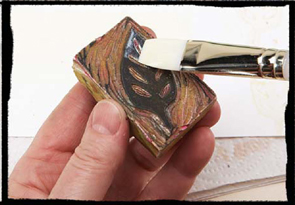
1. Load brush or stamp with fluid
Masking fluid can be painted directly onto the paper. You can create letters or shapes with it. You can also apply the masking fluid to a stamp. Simple stamps are best to use, since the fluid can be more easily removed during washing. Avoid stamps that you cannot soak. Using a damp flat brush, paint some masking fluid onto your stamp.
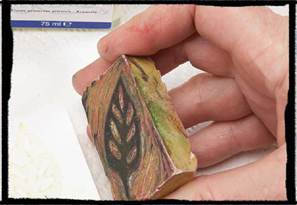
2. Stamp
Immediately press the stamp onto the paper. Repeat as desired. Clean your stamp immediately, and if there is residual “goo,” rub it away after it has dried. Let the fluid dry completely on your paper — several hours is ideal.
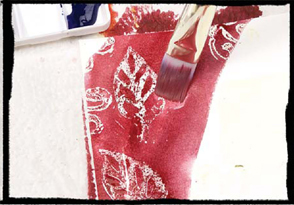
3. Apply wash of paint
Do some paint spilling over the paper with the resist stamps, and you'll see how the dried fluid resists the color. Washes of dark color are great for a high contrast.
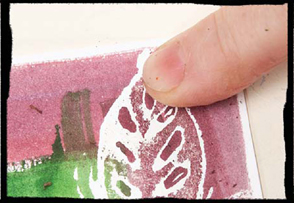
4. Rub off dried fluid
When the paint is dry, rub off the glue-like masking fluid using your fingers. Once you get a little ball of the dried fluid moving, it becomes easier to remove it.
Tip
You also can use clear embossing with rubber-stamping as a resist. Simply stamp and emboss your image as usual. You can also use an embossing marker to write or doodle. Using clear embossing powders, heat as usual to melt the embossing powder. You can proceed with painting a wash of color over your page.